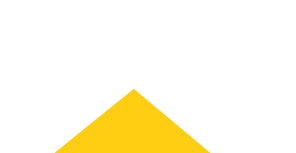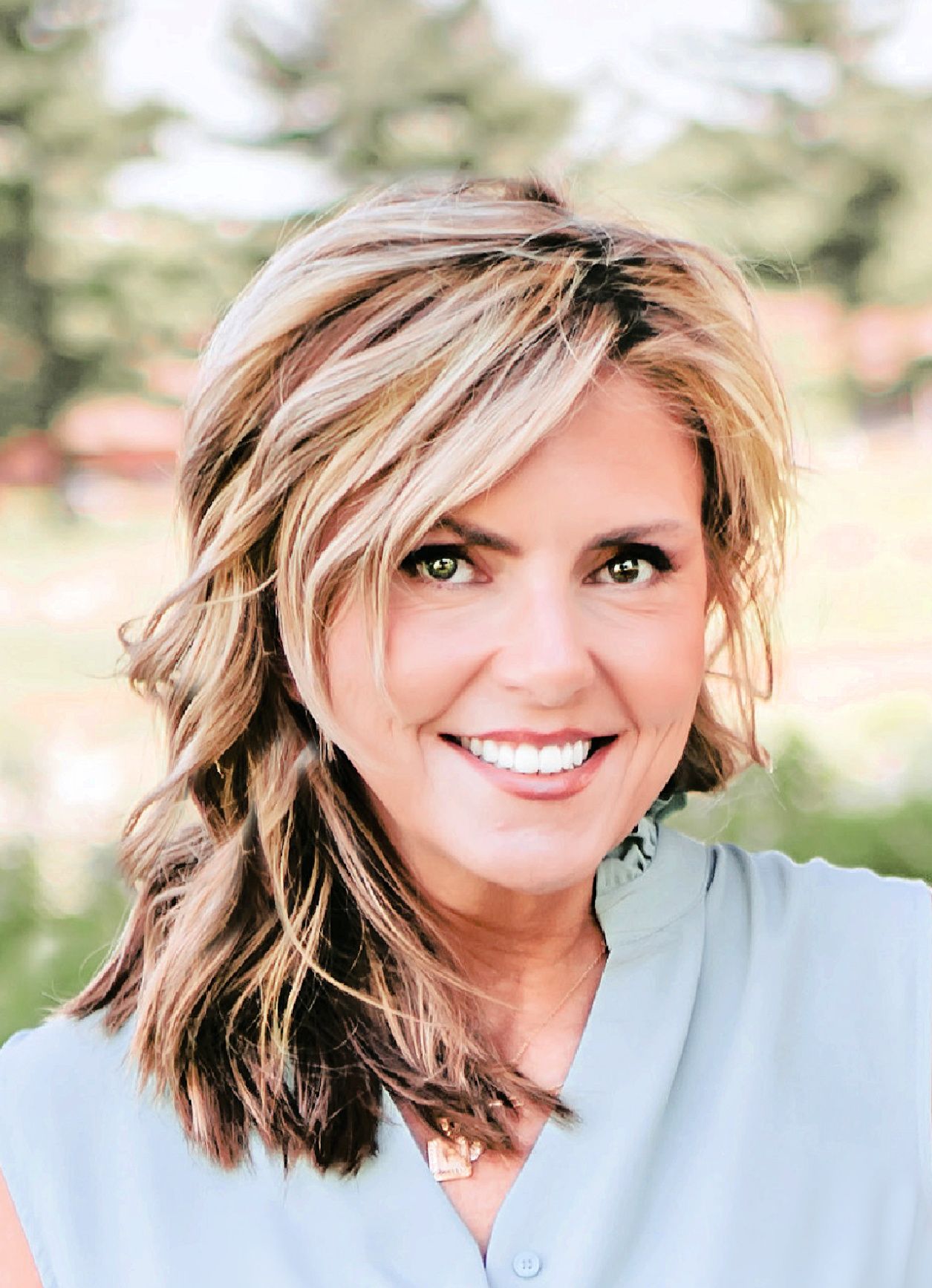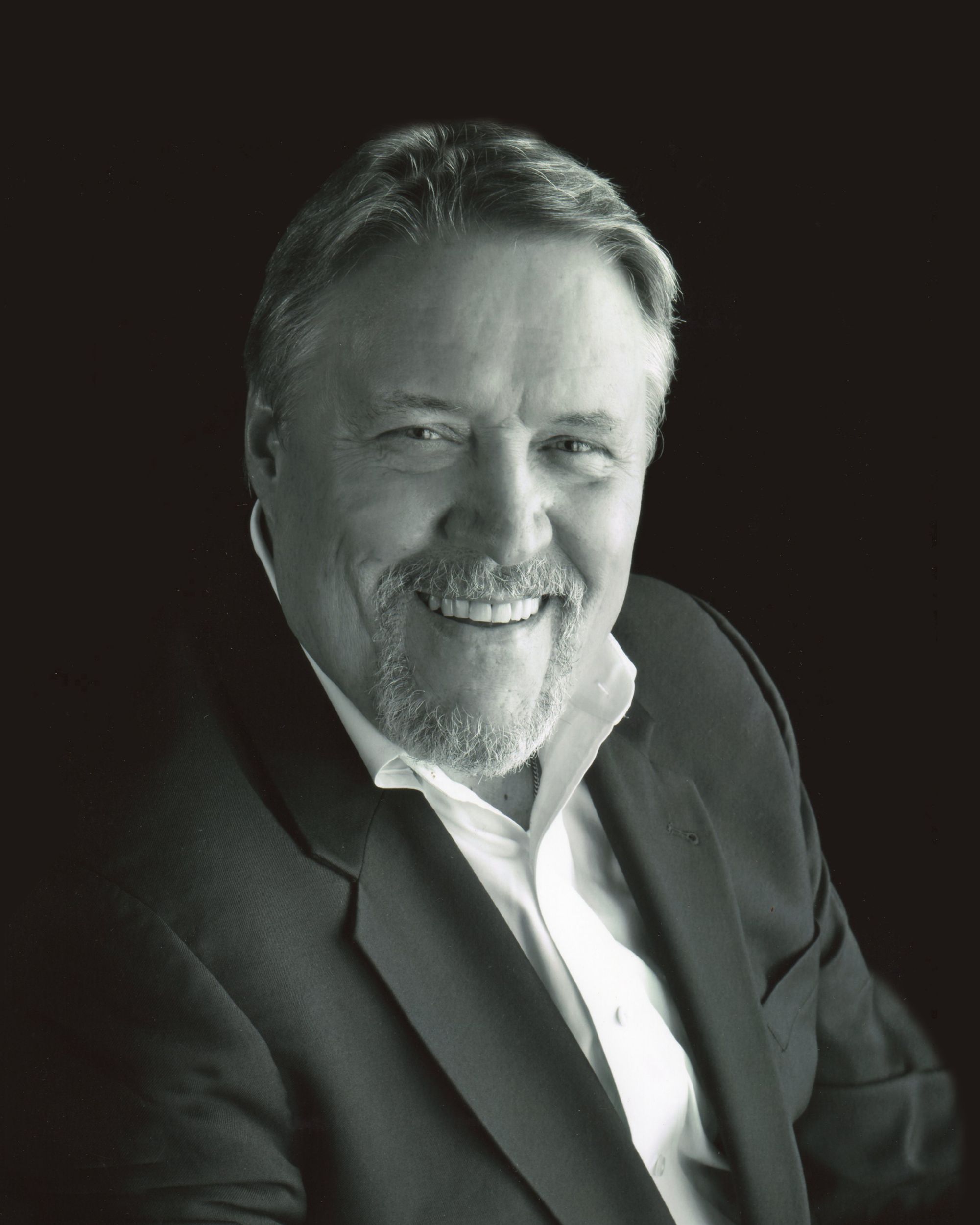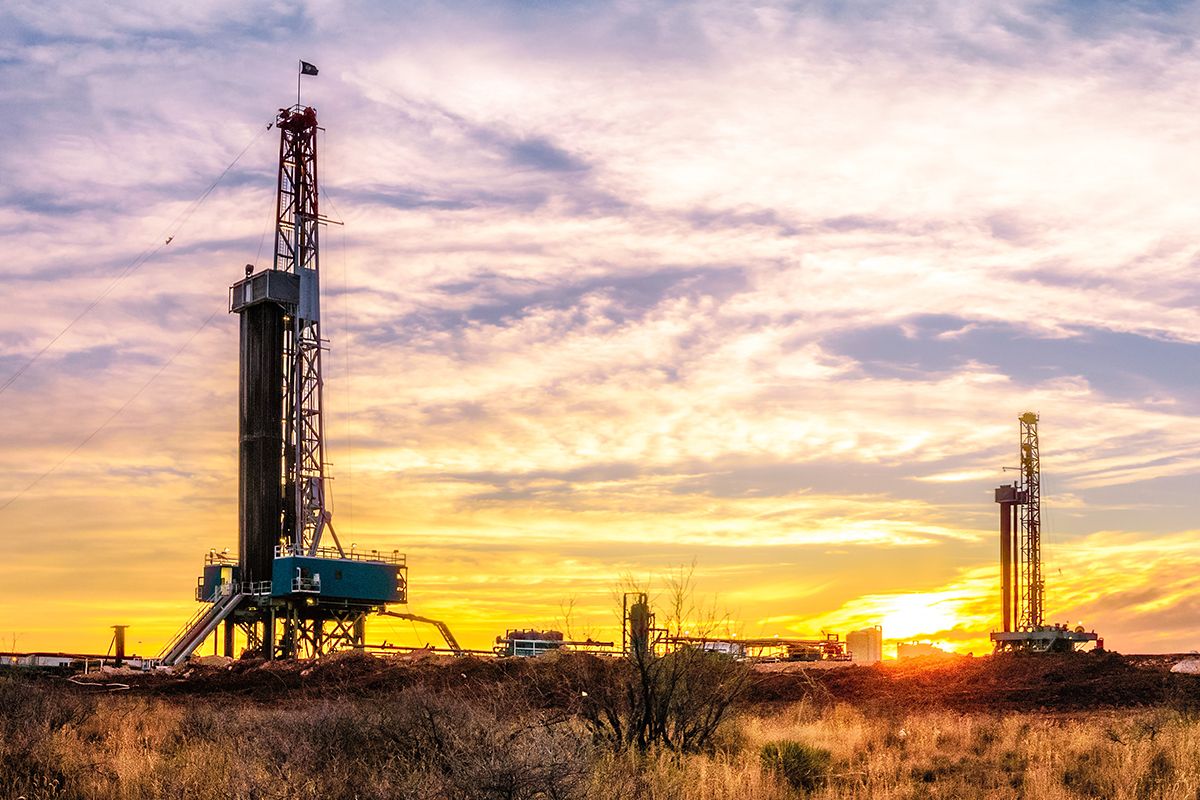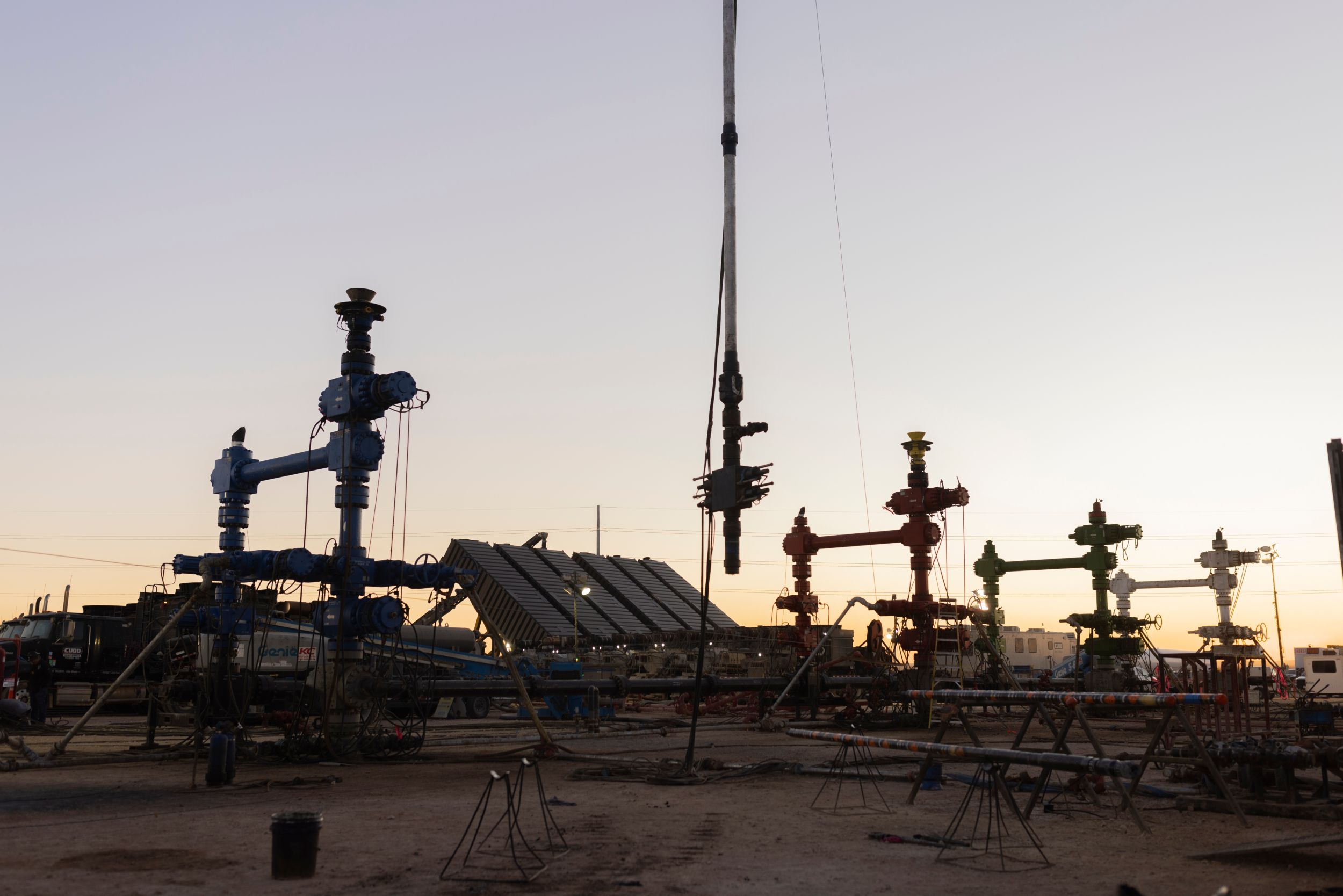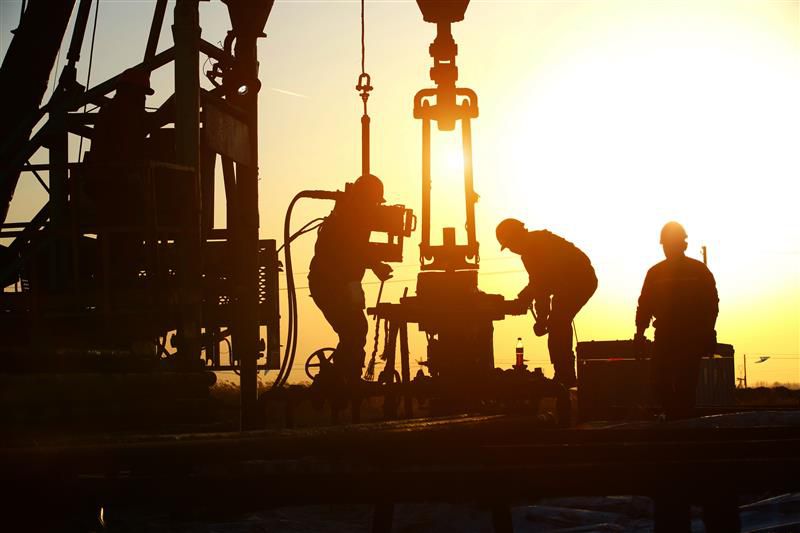00:00:00 Speaker 1
This episode of the Energy Pipeline is sponsored by Caterpillar Oil and Gas. Since the 1930s, Caterpillar has manufactured engines for drilling, production, well service and gas compression. With more than 2100 dealer locations worldwide, Caterpillar offers customers a dedicated support team to assist with their premier power solutions.
00:00:28 Speaker 2
Welcome to the Energy Pipeline Podcast with your host, KC Yost. Tune in each week to learn more about industry issues, tools, and resources to streamline and modernize the future of the industry. Whether you work in oil and gas or bring a unique perspective, this podcast is your knowledge transfer hub. Welcome to the Energy Pipeline.
00:00:51 KC Yost
Hello everyone and welcome to this episode of the Energy Pipeline Podcast. Today we'll be visiting with JP Srock, Vice President of Safety and Risk Management at Atlas Energy Solutions, and as a special guest, Kelly Scott from Caterpillar Safety Services, as she has returned for her second podcast. They will be discussing how their partnership helped improve Atlas safety system and how Cat Safety Services continues to support Atlas' resilient safety culture. Welcome to the Energy Pipeline Podcast JP, and welcome back Kelly.
00:01:30 JP Srock
Hello.
00:01:33 Kelly Scott
Glad to be back.
00:01:33 KC Yost
Hey, great to have you guys here.
00:01:35 Kelly Scott
I was going to say JP is the special guest. inaudible
00:01:41 JP Srock
I think we're right with you being the special guest, Kelly.
00:01:43 KC Yost
I think we're good there. I think you're right JP. So JP, before we start talking about safety systems and Atlas, would you mind taking a few minutes to share your background with our listeners? I know that you and I are from the same part of the country, so just go ahead and start in a little Pennsylvania town and work from there, okay?
00:02:04 JP Srock
Yeah, absolutely. I grew up in Western Pennsylvania, a little town called Dubois. When I graduated high school, I decided to go into the military. Went into the Army 82nd Airborne, and from there I decided when I was in the military that, hey, I want to help people, and how do I do that? There's a phenomenal safety school in Indiana, PA, called IUP. They have a safety science engineering program. Went to school there. And through a series of internships, I soon realized that, boy, I want to be out in the field with people. I want to help them. I want different experiences every day. Interviewed with an oil and gas startup company back in 2001, and from there, history has been oil and gas services. Through some downturn around COVID, I went to a mining company that did mining and last-mile logistics called High Crush. Worked there for three years. And then Atlas Energy Solutions, where I'm at today, acquired High Crush in March of 2024, making Atlas the largest mine sand producer in the United States, also the largest last-mile provider in the United States. We specialize in technology. Innovation drives our organization, and very good to be part of that. But what drives everything and that we do is people. We're focused on improving people's health, improving people's wellbeing, which really ties into what we're doing with Caterpillar, and glad to be here today.
00:03:51 KC Yost
Great, great. Well, first of all, thanks for your service.
00:03:55 JP Srock
Thank you.
00:03:55 Kelly Scott
Yes, thank you.
00:03:55 KC Yost
And shout out to Indiana University of Pennsylvania. I've spent some time there, going to school in Morgantown and driving up. It's just a rock's throw down the road, but glad to have you here. Talk a little bit more about Atlas Energy Solutions. Let's give the elevator speech, if you would please.
00:04:15 JP Srock
Yes. Atlas operates five sand mines across West Texas, really. We have four brick and mortar mines. And then we have a mobile and mining division called Encore, which has 10 individual mobile mines. Mobile mining is very unique from an energy conservation perspective, risk reduction to closeness to the well site where our goal is to get trucks off the road for our operators, and it utilizes damp sand versus dry sand. So a huge reduction in silica natural resources to dry the sand. We have a last-mile division, which is a leader for both boxes, silo systems, pile systems that operate both dry sand and wet sand throughout West Texas, Oklahoma, and the Northeast. I get an opportunity to come back every so often to visit my folks.
00:05:18 KC Yost
Excellent, excellent, excellent. That's quite an operation. Quite an operation. Kelly, so before we start getting into you and JP visiting, remind our listeners of your background if you would please, and let's do a quick overview of Caterpillar Safety Services, please.
00:05:37 Kelly Scott
Okay. Thanks for having me back. I appreciate it. Apparently, I didn't do so bad the first time around. I'll take it.
00:05:43 KC Yost
You were the star.
00:05:45 Kelly Scott
I'm Kelly Scott. I'm an account manager here at Caterpillar Safety Services. In my role, I partner with organizations like Atlas just to understand their business, their challenges, what their goals are, and then recommend solutions to help integrate safety into their operation's DNA. I serve our customers within oil and gas, pipeline, utilities, chemicals and government. Also, PS: We don't discriminate. So even if you don't buy the world's best earth moving equipment, our machines, we still want to help keep you safe. So we will still partner with you. I've spent my career, the past 18 years, across various industries, but always in a customer first role. That's always been my approach, just to understand my customers and then position something that will help them. I've been on the team here at Caterpillar Safety Services a little over four years. We're like a big family. I told JP when we met welcome to family. So glad to be here.
00:07:01 KC Yost
I'm glad to have you here. I think this is about the time that I step aside and let you two guys visit a little bit about how this partnership has helped improve the Atlas safety system and how you guys have produced such a resilient safety culture. So I'll turn it over to you two guys.
00:07:22 Kelly Scott
Awesome, thank you. Well, and JP, you've probably heard this before, but we at Caterpillar define a resilient safety culture as one that is able to resist pressures both internally and externally, and that could be the budgets, production schedules, what have you, one that can adapt to any change that comes their way and be able to bounce forward from that instead of just crippling itself, the ability to really recover quickly when something does happen, which could be an incident. And really, I think the biggest part is being proactive and anticipating what the risks are as much as you can, and then learning from the mistakes that you make. Because really, we're all people at the end of the day, at least I hope we all think that. So within Atlas, can you kind of share what aspects make up your safety system?
00:08:25 JP Srock
Yeah, absolutely. I think we share kind of the same definition of resiliency and safety processes and systems. What has been really our journey was we had a great program. We had industry best total reportable rate, loss controls in place, but we were good, and we started looking at this as we came out of COVID, and we were still hurting people. We were like, "How can we get better? What do we need to do?" So we looked at some of those things that you had just mentioned and said, "Boy, we're not doing these very well. How we're talking to our employees, we're putting this perceived time pressure on them where it's not what we mean to do, but we're not speaking to them right." We're looking at the workforce where you have new leaders coming aboard. We realized that investing in our employees from a safety leadership training, just setting that up with a strong foundation, was critical to the success of the organization, and we had to have some flexibility of the program. Every operation is a little bit different. We didn't have that in our program really until we started partnering with Cat to see what makes a good program. How do we go from good to great. The last piece, which we're doing a very good job of today, driven by our employees, we believe the Cat system is built by the people for the people. That's how it's sold to our folks and how we have it because they're the people that are impacted is that defined activities and leadership engagement. So our leaders are out in the field, which is maybe the key element to a good program in our belief is leadership visibility, sharing the message from a caring environment, not a finger pointing environment. Employees have to feel comfortable. When you tie that all together, the one piece that we've learned a lot through our journey with Caterpillar is the measurement piece. What gets done gets measured. That was the element I think that we're still building on and still need to do a lot around that, but we have a good basis and a good foundation. And it truly is a family aspect. Our Caterpillar safety representative, we consider her family. She's part of the team. She challenges us more than some of our own internal people do. And I think that is what builds a good program. You have to challenge people. We can't have a system of like-minded folks because organizations don't get better, and that's kind of the holistic approach that we take to resiliency.
00:11:30 Kelly Scott
Love that. You can't get complacent when it comes to people, right?
00:11:35 JP Srock
That's exactly it.
00:11:36 Kelly Scott
You're always trying to get better. Well, and that's the same here at Caterpillar as well internally. With all the resources into putting together all of your safety systems, your programs, your policies, procedures, why do you think are maybe some of the reasons behind why employees and leaders don't always follow those expectations that we set, or at least-
00:12:04 JP Srock
No, that's a great question.
00:12:05 Kelly Scott
...use the system like we intended, right?
00:12:08 JP Srock
Every accident, you go into the investigation; you look at your policy. Man, we have a policy for this or a work instruction. Why didn't you follow it? Well, it boils down to a couple of things. First off, they weren't aware it was there, or the rollout of it was not very good. In most cases, what we found is they weren't involved in creating it. So maybe it didn't work for them, or the process changed and there was no continuous feedback loop to update the policy. Those are the big three that we find. The other one would be that time pressure. A supervisor comes up and unbeknownst to them, they didn't mean it, but they said, "Hey, how much longer is this going to take?" Or, "What's your next step?" Rather than having that focus leadership conversation coming into it, "Hey, how can I help? Where are we at? Let's discuss this process. Maybe you're missing something." Or getting involved just to simply help out and be a visible agent of change with them.
00:13:15 Kelly Scott
Right. Yeah, getting people that are closest to the hazards involved in actually creating those policies it totally changes the game, doesn't it? It changes the mindset because they-
00:13:30 JP Srock
Overnight.
00:13:31 Kelly Scott
It's just so amazing to see, but it's saving their lives because they're the ones closest. Talk about engagement and getting everybody else on board; we do that for you. So how do you ensure that those safety expectations, the ones that we write down that aren't just in a book somewhere on a shelf, but being actually lived out in the field every day and understood and actively put into practice by people in roles across the organization?
00:14:12 JP Srock
We do a couple of different things. I think the first, if I carve it back a little bit, as part of the safety perception survey that we did when we started our journey with Caterpillar, we had some critical processes that weren't going well; workplace exams, pre-op inspections on our equipment, and we went out and asked the employees, "Where's the failure mode to this?" And for the things we mentioned earlier; we don't know where they're at, they don't work for this type of equipment, yada, yada, yada. So we formed these continuous improvement teams through CAT's facilitation. And what I think is the most important part, back to your question, is the employees built the processes. They took it from the ground up and defined and wrote how we do our inspections, our workplace exams, our pre-op inspections. The employee of the work team went to the manufacturer, got the information and built it. That's step one. But maybe the most important step is this team of peers, hourly employees for us, went out into the field and trained their fellow employees on this is the expectation. This is how we're going to do it. It was a hands-on training. It was a time investment in the organization, which our organization is more than willing to invest time, and to employee development, learning and rolling out things the right way. So the employees rolled this out. And then what we did is we have a philosophy of two clicks. If you're going to access a policy or procedure, you have to be able to find it within two mouse clicks.
00:16:00 Kelly Scott
Agreed.
00:16:02 JP Srock
In addition to that technology, we are a technology-driven company. We use QR codes. If an employee has to go back into an office to pull a policy up, they're not going to do it. We all know that. Very few of them will. So we put QR codes at the point of contact on the piece of equipment we want them to inspect. Or maybe if they're doing a work order on it, the QR codes, they scan the QR code, the work order pops up, the instructions are right in there. So point of contact is so critical for today's employee with technology. We have to use it. And end measurements. You got to measure to make sure they're doing it. And then through the defined activities, which is part of what our hourly employees built for our workforce, our COO has criteria where he has to come out periodically and walk with the employees and do these evaluations and assessments. So every level of the organization has something tied back to an assessment or an activity that they have to do to support this policy, or procedure or initiative. Those things get measured, and they get shared across the organization. It's very visible how we share our things through Power BI utilizing your power apps or technology, but they're shared and our employees talk about those.
00:17:34 Kelly Scott
Wow, that's great. Well, and the big thing that I hear is that accountability is almost built in-
00:17:40 JP Srock
Yes, that's a critical part.
00:17:42 Kelly Scott
... because everybodywithin their different roles each have a role to play in that policy or procedure.
00:17:49 JP Srock
Absolutely. And the employee built it.
00:17:52 Kelly Scott
Right. How are you able to track and evaluate if things are working within that safety system?
00:18:04 JP Srock
Part of it is the measurements, obviously. We track expectations through measurements. But the measurements also, if we're doing an inspection on a piece of equipment, and we see that these inspections are being done, the frequency is good, they're looking good, but then as we go out to the field from an audit team, but a trust but verify has to be built into any good resilient program is our operational leaders jointly with our safety team. We don't look at safety as separate from operations. Safety and operations they're the same group. We may not report to operations. Got to have a little separation of church and state. We try to do as many things together as we can because all learning from one another. We don't know the equipment or the operation as well as the ops team. They don't know the safety principles as well as we do. But man, when you can get the teams to work together and go out together, that learning is phenomenal. So if we go out, and we start to see that after one of the defined activities that we built was after a pre-op inspection within an hour, we periodically have to go out and inspect that same piece of equipment. So something shouldn't change within an hour of an inspection. And if we find deviations, that's an opportunity for a coaching moment. Not discipline, but a coaching moment. Okay, what went wrong? What needs to change? Why isn't this working? I think we're finding there is employees starting to share because it's not a discipline aspect. It's more of a, hey, we're here to help. You need to come forward. And then we're creating links where our employees can provide feedback anonymously through QR codes. They scan a QR code; the feedback goes to the safety team. It's shared on a monthly basis with our mesh steering team, and we try to resolve things that way as well.
00:20:09 Kelly Scott
Oh, wow. So then you probably get some feedback on a daily basis, I would think if you that's-
00:20:16 JP Srock
There's some that comes in pretty much daily, maybe more so a couple, three, four a week. But through starting this initiative, we're weeding out the things... As you can imagine, when you start a new program, you get some pretty crazy things.
00:20:34 Kelly Scott
My coffee's not hot enough.
00:20:37 JP Srock
Yeah, that's exactly it. The shower didn't put enough water out. My hair doesn't flow. But now we're getting more down to, hey, we need to look at this policy or this isn't working well. We're rolling out a ton of technology in our organization. Our Dune Express is the largest conveyor system in the United States. That's 42 miles, the largest in the United States, second largest in the world, but the amount of technology that goes into that, employees are saying, "Hey, we need some more training," and the organization is responding by providing that. So it's pretty special where you get that. If you're getting feedback in, you have to close that loop or people they'll just stop submitting it.
00:21:30 Kelly Scott
And they'll stop sharing their honest opinions.
00:21:33 JP Srock
That's exactly it.
00:21:34 Kelly Scott
There's nothing worse than asking for feedback and then not acting on it, right?
00:21:37 JP Srock
Yep, absolutely.
00:21:39 Kelly Scott
Also, what I hear you saying, technology is such a huge part and will continue to play a huge part of our lives and our businesses, but we can't forget the human aspect, because we're still going to be there at the end of the day, and it's how we bring that technology on board and how we adopt it and how we perceive it that is going to make all the difference.
00:22:03 JP Srock
That's exactly it. The people are the most important part.
00:22:07 Kelly Scott
Right. So it sounds like you've got a good system starting to get feedback. How do you gather and utilize those employee insights to then make further refinements to the safety system?
00:22:24 JP Srock
A couple of different ways. If we're out of a survey cycle where we're moving into... it'll be our third survey here in the first part of 2025... I think that provides some really good insight into what the employees need and what their perception is. Our first survey, we thought things were way different than what the employees thought. It was quite an eye-opener. If there's one thing I recommend is the survey. I really like the way Caterpillar designs their survey with the human performance aspect. That's such a large part of a cutting-edge safety program is HOP, Human Organizational Performance, and the cultural questions, breaking them into those 11 cultural segments. When this first survey rolled out, we looked at it as okay this is what the employees feel that we're doing really well. This is what we're doing really poorly. And it came in, it's like, whoa. The top five were things we didn't even think about. We thought we were hitting it out of the park on those things, and the employees said, "We really need a little bit more help on this." And it tied back to employee visibility, giving them some additional resources. The organization, we are willing to spend money and spending a lot of money, but we were doing it on things that didn't provide value to the employees. If it doesn't provide value, they're not going to utilize them. So let's give the employees what they need. And that's where the survey helped us. And then we launched a continuous improvement team. So how we continue to take that insight is either through the survey or we start to look at trends within the organization or the industry trends. We belong to a lot of associations and there's things that these organizations are working on. From there, we'll stand up a continuous improvement team led by our people to put this together and say, "Okay, how can we roll this out within our organization?" We stand up that team and let the team run with it. We'll be on our fourth continuous improvement team starting in 2025. We've done three over the last two and a half years, our last really year and a half. And it's been phenomenal to launch those teams and see the benefit of them. The other way we share information is when it comes in, we do a weekly town hall led by our leadership. It starts off with safety. All of our internal meetings start with safety. And it's not just safety talking safety; it's the operations teams talking safety. And then we share the data. When data comes in, we share it monthly. We share safety alerts. We make sure that these alerts are viewed a couple of different ways. We've learned so much through our Caterpillar representative or liaison on communication streams. Just email it out used to be what we'd do-
00:25:36 Kelly Scott
You got to get them on all different angles.
00:25:41 JP Srock
Yeah, that's exactly it. Everything we send out gets touched three different ways. We're seeing the benefits of that, because when we're in the field talking to our employees about it, they remember it. It's not like, "When was that sent out?" It's like, "Oh yeah, I remember that. Hey, you forgot about this." And it's like, "Okay, well that's great. Hey, let's use this feedback loop and get us to that. We'll update the safety alert and send it out." It's just really about getting that engagement. And making sure the employees know one, we care, and then give them a cycle to send this back to us for us to go and provide additional input back out to them.
00:26:21 Kelly Scott
That's great. When you mentioned the survey, so with the safety perception survey, customers when they do benchmark, they can see where the needle has moved, so where they've made improvements in terms of what their strengths and their weaknesses were. So I love that you're using that to continuously fuel your culture change. Love that. Can you describe for the folks listening how the relationship with us, Caterpillar Safety Services, came to be?
00:26:56 JP Srock
Yeah, absolutely. I spoke on it a little bit ago, but I'll elaborate. Coming out of COVID, we had what we considered a good program. We're industry leading, recordable rates. We had about 500 people at the time, but we were still injuring people. We were still having significant near misses that weren't getting reported the way they should have been and certainly weren't getting the detail of investigation where we wanted them to. We said, "Okay, how do we go from good to great?" So we looked at some of the organizations out there that do this. There's a few. We landed on Caterpillar for two reasons. One is we looked around our mine sites on our sites, and we looked around, and we see all this yellow iron out there, and then the majority of it's Caterpillar. So you get that immediate brand recognition with our employees, and that's important. There's something to be said about Caterpillar. It's the best on the market. Our people know that. And then as we're interviewing the Cat safety service team, the philosophies of built by the people for the people, caring environment, leadership driving, supporting, being visible, those are all the things that we truly believe in as an organization. It was a seamless process... After the conversations... man, this is what we want to do. After the survey, and then we really started working with our Cat facilitator, our representative, they became part of the company. They know our people. They know our processes. We're not getting a different person each time. They're running our training programs from the soft skills, which I believe is foundations of communication. If we're not providing our frontline leaders and employees tools to have positive conversations, how can you expect them to do that? They're not born with it.
00:29:18 Kelly Scott
Exactly. It's a skill. Communication is a skill. You have to work on it.
00:29:24 JP Srock
And they have to feel confident to do it. We do that. And then the supervisor leadership training. What's culture? We've done a lot of that training internally, but there's something said about the training coming from a third party. Employees listen a little bit better. We pull them out of their environment, we put them in a room, we feed them a meal. And then the level of interactiveness. That's what truly I like about the CAP program. It's all interactive. It's not classroom learning. It's interactive. It's case studies. It's getting up, working the board on some of the things that we take for granted as leaders. And our employees after they go through these trainings, they came back, "Man, I learned so much. When can I sit in the next one? This is great." We feel that by creating that foundation mirrors what Caterpillar wants to do, and it certainly helps us. The partnership, we're really on about three years now, moving into the three-year mark of the relationship, really three and a half years, and it's been a phenomenal relationship that has helped strengthen our program and really to be a great program. We're receiving awards through some of the groups we're part of. I think our next evolution will be on the HOP front, which Caterpillar is a leader in that HOP. How do you tie this whole program into that human performance aspect? It's nice to see where Caterpillar is driving that. So that's our next evolution.
00:31:15 Kelly Scott
And also just to make sure that we're able to embed that change and sustain it, because that can be the hard part.
00:31:24 JP Srock
Yes.
00:31:25 Kelly Scott
What I heard you say is when you were looking at different providers that it was almost the passion. I think that's what drew me to this team at Caterpillar Safety Services too. My boss and my grand boss... he loves it when I call him that... were both customers. Back in the day, they were in safety roles. Caterpillar Safety Services came in. They were resistant. They became believers because they saw the impact that our solutions had, and ultimately came over to our side, joined Caterpillar Safety Services, and now they're leading our team and our strategy, and it's all customer first. So I think that speaks volumes, especially inaudible
00:32:12 JP Srock
Absolutely. It would not have happened if you didn't have that right culture. That is so important. And we see it. Passion is a great word for it. It is truly the passion to improve and to help.
00:32:30 Kelly Scott
And we do practice what we preach, and we are family. Okay, last question. What would be some key steps you would recommend to any other organizations working towards building in resiliency within their own safety systems?
00:32:48 JP Srock
If I had to start, I'd go back to where we were at. Every organization out there has something they're working from. Is it right? It may be. It maybe just needs tweaked a little bit. I think you need to bring in a third party. My recommendation, obviously, would be bring in Caterpillar. But you need to really evaluate, and you need to hear from your employees. I think the survey is a great place to start because it gives you a solid benchmark where it's looking at employee data, supervisor data, management data. It's slicing and dicing it all together into these categories where you can really start to build your program. Maybe you're scoring low in carrying environment. Well, without that survey, you may not know it. You want to try to avoid the shotgun approach to safety is what we call it, and get very focused because you have limited resources, limited time. And you need to have the employee's voice heard. That is the key to success, is if the employees feel they're being listened to, then they're more apt to jump on board with it. That'd be the starting point, I think. You got to figure out where you're at, and you need an unbiased approach to that to get things broken down into small bites where you can start working on it
00:34:19 Kelly Scott
And really just to understand the data, right?
00:34:23 JP Srock
Yes.
00:34:23 Kelly Scott
Because I've seen some surveys, it's just a data dump. But if you can't read it and take action on it, it's not helpful.
00:34:30 JP Srock
It's useless. That's exactly it.
00:34:33 Kelly Scott
Those were all the questions I had for you. Thank you again for your service, JP. We at Caterpillar Safety Services appreciate your business and your partnership, and this was fun.
00:34:45 JP Srock
Absolutely. Great.
00:34:46 Kelly Scott
Hopefully, you enjoyed it.
00:34:48 KC Yost
This was fantastic. I enjoyed your conversation. I really, really did. Great job, guys. We are running a little light on time. Any closing remarks that either of you would like to make before I do my sign off?
00:35:06 JP Srock
KC, I'd just like to thank you and Kelly and the Caterpillar team for setting this up. As a safety professional, I love talking safety, and love our transition from good to great where we're at. It's a continuous journey. We're never done. And I think that speaks volumes to the relationship between Atlas and Caterpillar. I know that's the same philosophy, but thank you.
00:35:31 Kelly Scott
Well, kudos to you guys. You've put in a lot of work. You're already on your third CI team in a year and a half. That's a lot. That means-
00:35:41 JP Srock
That'd be the other recommendation. Don't do two at the same time.
00:35:48 Kelly Scott
That is aggressive, JP. Aggressive, yeah.
00:35:50 JP Srock
Well, listen to your Cat facilitator who said maybe you don't want to do that, but we do best. But yeah, this will be our fourth one coming up. One at a time would be my recommendation.
00:36:02 Kelly Scott
Agreed, because when I heard you say that, I'm like, whoa, that's a lot. That's aggressive.
00:36:06 JP Srock
Yeah.
00:36:07 Kelly Scott
Because it takes a while to make sure that it's right inaudible
00:36:12 JP Srock
And a lot of time investment and energy investment, but it is well worth it, well worth it.
00:36:19 KC Yost
Gosh. Thanks both of you for your time. I really enjoyed this conversation. It was really great. I appreciate you both coming on today. To our listeners, if anyone would like to learn more about Atlas Energy Solutions, you can find them on the web at atlas. energy. Which I thought was a really interesting IP address, but that's where I found you; atlas. energy, not. com or anything like that, just atlas. energy. So very cool. Very cool. If you'd like to learn more about Caterpillar Safety Services, you can go to a very long location or do what I do, and just Google Caterpillar Safety Services. Kelly, do you have a shortcut?
00:37:06 Kelly Scott
Yeah, just cat. com/safety.
00:37:11 KC Yost
There you go; cat.com/safety. I like that one a lot better. Thanks to all of you for tuning into this episode of the Energy Pipeline Podcast sponsored by Caterpillar Oil and Gas. If you have any questions, comments, or ideas for podcast topics, feel free to email me at kc.yost@oggn.com. I also want to thank my producer, Anastacia Willison-Duff and everyone at the Oil and Gas Global Network for making this podcast possible. Find out more about other OGGN podcasts at oggn.com. This is KC Yost saying goodbye for now. Have a great week and keep that energy flowing through the pipeline.
00:37:49 Speaker 6
Thanks for listening to OGGN, the world's largest and most listened to podcast network for the oil and energy industry. If you like this show, leave us a review and then go to oggn.com to learn about all our other shows. And don't forget to sign up for our weekly newsletter. This show has been a production of the Oil and Gas Global Network.
